Author: TechFlow
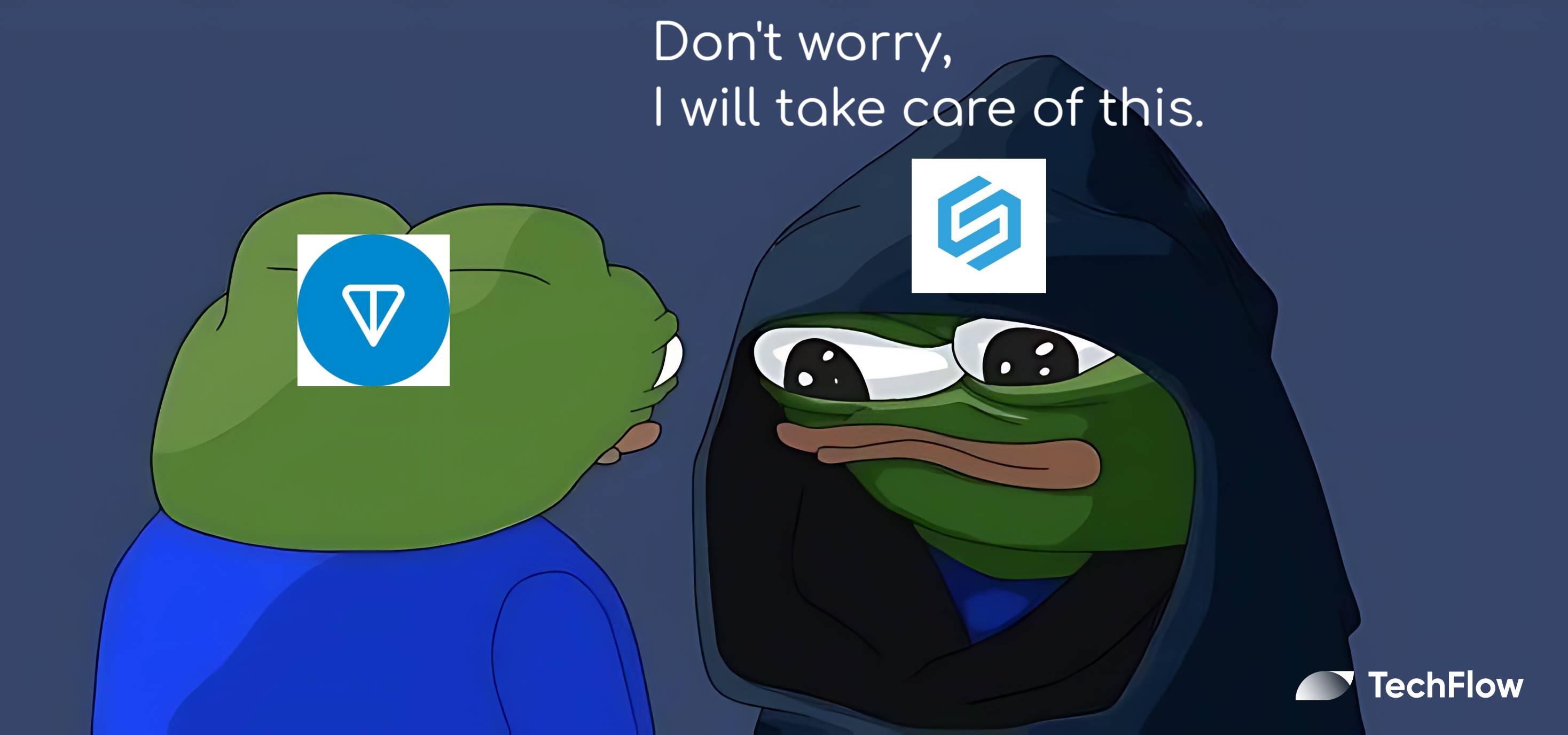
One of the hottest public chains this year, TON, seems to have gone a bit quiet recently.
Backed by Telegram's user base of over a billion, the traffic that has made everyone envious has attracted countless people to build projects and farm on it.
But after a few ecosystem projects went live, people started questioning the quality of Telegram traffic.
Poor user quality, bot/farming parties too many, is the most common complaint we hear.
The end result is that the exchange effect between projects is not good, or as a new project that wants to grow, the investment effect is also not good.
Is Telegram's traffic not real? What are the better growth methods? Is Telegram/TON worth investing in?
This article will attempt to analyze the effective path for growth on Telegram/TON from the perspective of Telegram's recent development.
Telegram + Wallet, the Pandora's box of business potential has been opened
Telegram's inner demon, many users but poor user quality?
First of all, it is undeniable that Telegram's traffic is huge. From the current data, as of 2024, Telegram's global user base has exceeded 700 million, and it currently has 950 million monthly active users, making it the third largest traffic entry after Google and Facebook.
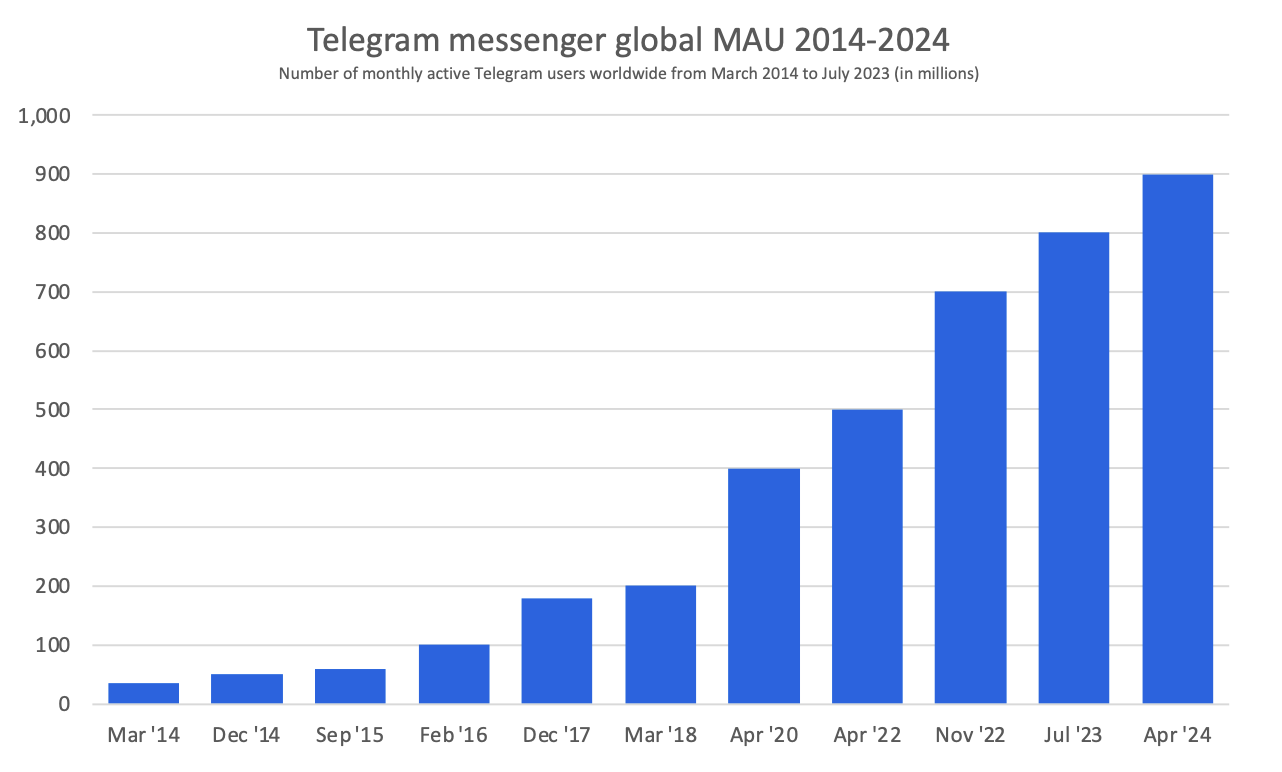
*Charts From Statista
But from a commercial perspective, Telegram has just started.
First, Telegram has launched a paid subscription service, providing users with more advanced features and customization options.
In addition, they are also generating revenue through advertising placements in channels and groups, which can be targeted based on user interests and behaviors, which is Telegram's current main business model.
However, this commercialization process also faces some challenges, such as:
Due to the diversity and anonymity of its user base, it is difficult to establish accurate user profiles, making precise ad targeting complex.
Telegram has always been touted for its focus on privacy and ad-free experience, so how to commercialize without compromising the user experience is an important issue.
On the basis of the above problems, whether it is traffic owners (groups with TG traffic, such as a large group owner or an application with many users) or advertisers (those who want to advertise on TG, such as project parties), they may be at a loss when facing such a huge traffic base.
So the question becomes, there is traffic here, but how to utilize the traffic well is a problem that needs to be broken through.
And wallets, Mini apps may gradually change this situation.
Wallet-driven Mini app explosion, Telegram's user profile becomes clearer
First, we need to clarify two concepts: Telegram Wallet and Telegram Mini Apps.
Telegram Wallet: Telegram Wallet is a feature developed by Telegram, which was previously abandoned, but later developed by the TON community and announced by Telegram in September 2023 to integrate Telegram Wallet, supporting TON and other cryptocurrency transactions.
Telegram Mini Apps: Telegram Mini Apps were officially launched in April 2023. These apps allow developers to create and run web-based applications within Telegram.
Although Telegram Mini Apps were launched earlier, it was not until the launch of Telegram Wallet that the use and development of Mini Apps really exploded. Although there is no official data to support it, due to the Wallet providing more convenient payment and transaction functions, this will attract more users to use Mini Apps for shopping, payment and other activities.
For example, just like the recent TOKEN 2049, the mini app launched by TON and TADA, which allows users to directly book rides through Telegram, currently showing a monthly active user base of over 2.8 million.
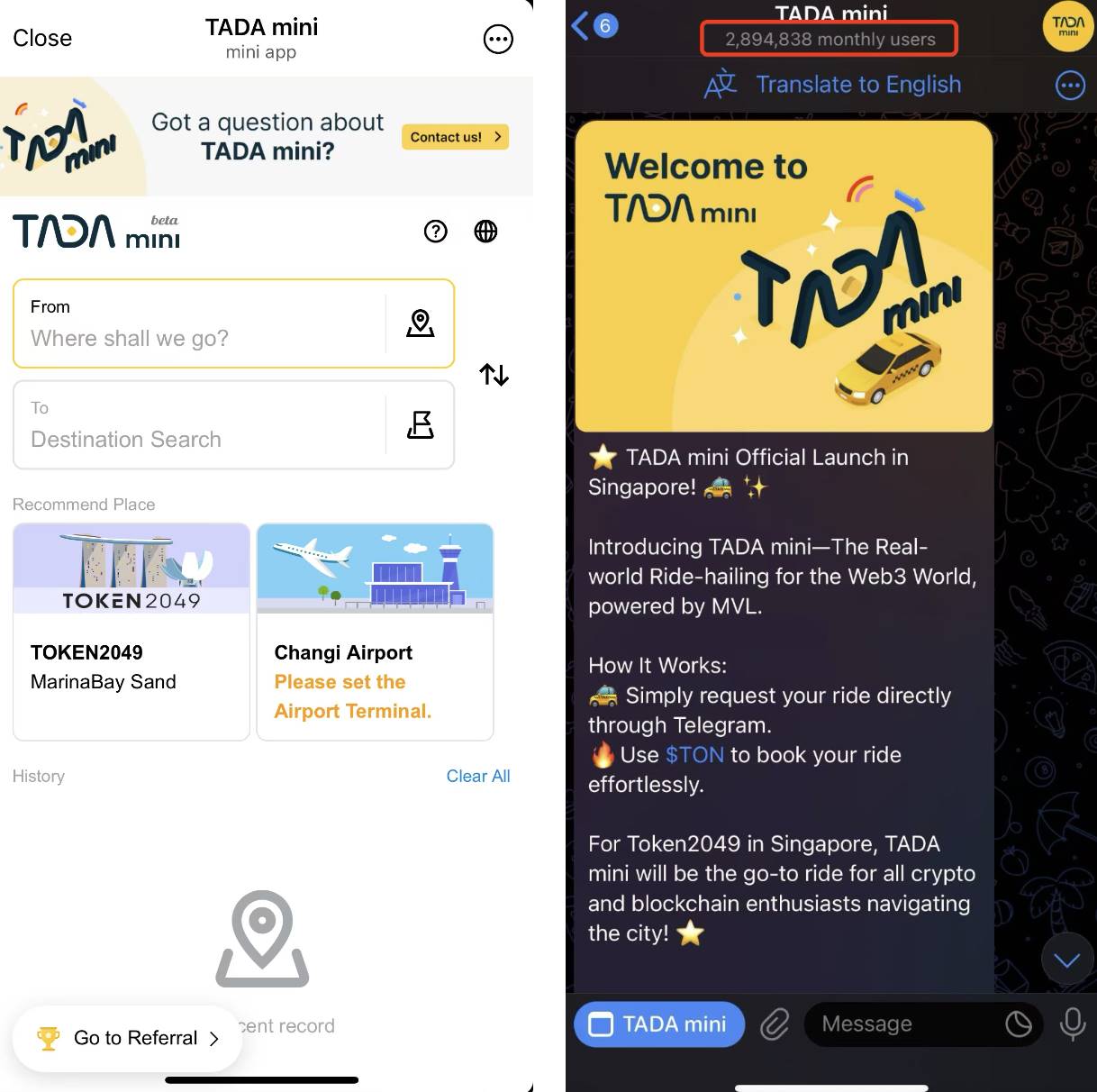
The number of Mini Apps is still growing, and it is with the further popularization of Mini Apps, users can choose more types of applications, such as crypto games, ride-hailing apps, etc. This makes Telegram's user profile more diverse and clear.
Through this rich application ecosystem, Telegram will be able to better understand user needs and allow user labeling.
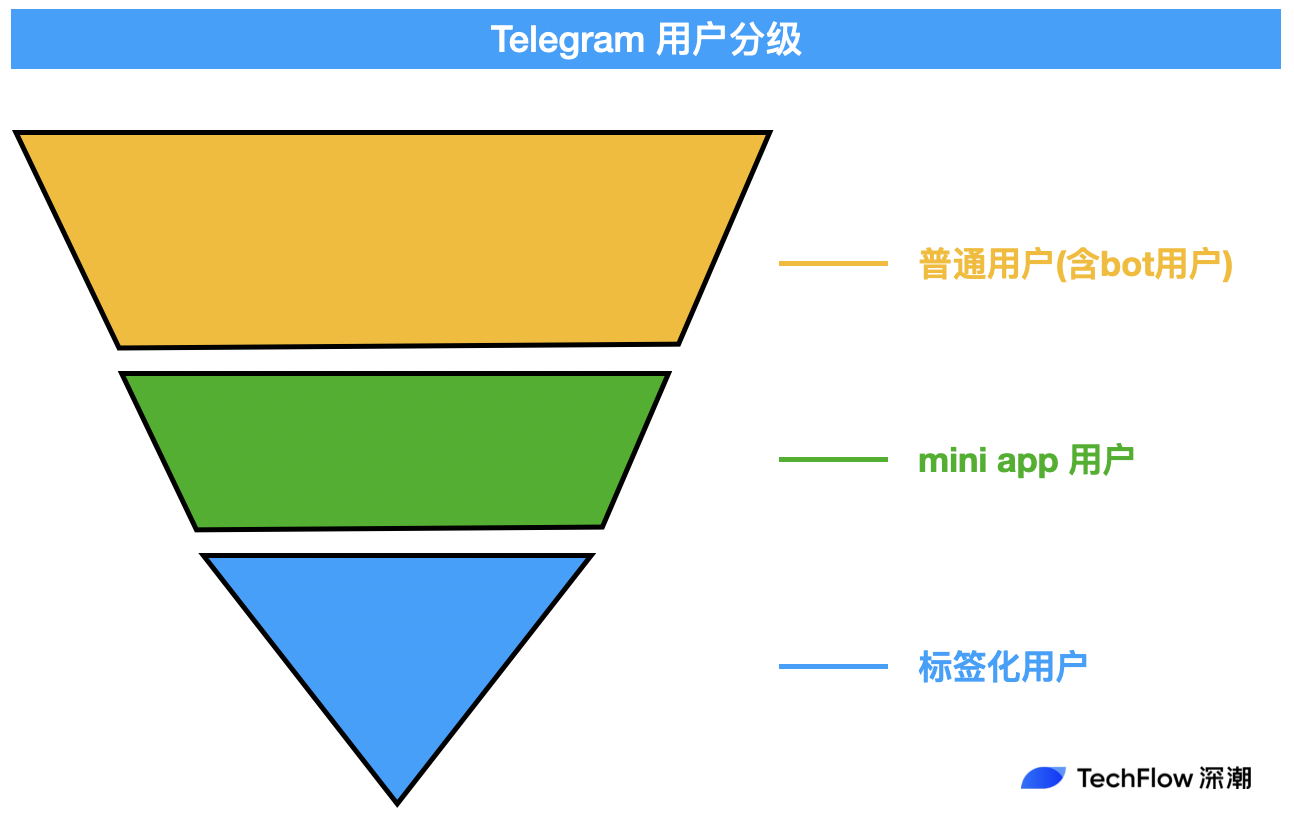
When users can be labeled, Telegram's marketing potential is unlocked.
Telegram's ownGoogle Ads/Guangdiantong
As mentioned earlier, Telegram's current main revenue streams are paid subscription services and group advertising services. When user labeling becomes more concrete, we come to the familiar Web2 traffic placement logic, similar to Google adsand Tencent's Guangdiantong.
Google Ads and Tencent Guangdiantong are advertising platforms that perform precise ad placement based on user data and behavior.
Google Ads analyzes users' search habits, browsing history and geographic location, among other information, to provide targeted advertising services for advertisers.
Tencent Guangdiantong utilizes the huge user base of Tencent's social network, combined with users' social behavior, interests and usage habits, to conduct precise ad placement.
Advertisers can set ads based on specific keywords and target audiences, thereby improving the conversion rate and return on investment of ads, in order to achieve better marketing results.

As Telegram's user labeling becomes more enriched, Telegram will also generate more similar business development opportunities. Through precise user profiling, Telegram can provide advertisers with more efficient ad placement solutions, attracting more brands and businesses to collaborate.
However, Telegram has not officially launched an ad placement platform similar to Google Ads or Guangdiantong yet.
At the same time, Telegram also has a natural special feature: since Telegram Wallet natively supports cryptocurrency payments, many mini apps actually allow users to directly interact with cryptocurrencies and Web3 applications.
Therefore, we not only need to find a traditional third-party platform to support the construction of Telegram's advertising ecosystem, but also a platform that can combine with Web3, in order to help advertisers effectively place ads on Telegram.
Web2 + Web3, making traditional traffic placement more effective
Make Telegram ads as effective as WeChat
First, we need to clearly define that advertising and growth are actually quite broad terms, covering many types, such as creativity, operations, etc. The direction discussed in this article is mainly about Telegram's ad placement.
In the traditional ad placement field, there are mainly the following modules:
DSP(Demand-Side Platform): The system used by advertisers to purchase ad inventory/slots. Advertisers can bid in real-time and select the ad slots that best fit their target audience.
SSP(Supply-Side Platform): Provides publishers with ad inventory management tools. Connected to multiple DSPs to enable real-time bidding on ad slots.
Attribution: The process of tracking user behavior to evaluate ad effectiveness. By analyzing data, advertisers can understand the performance of different ad channels and optimize their placement strategies.
Ad Network: Ad networks act as intermediaries connecting advertisers and publishers, aggregating multiple publishers' ad inventory and providing it to advertisers for centralized purchasing. Ad networks usually offer a variety of ad formats and placement options.
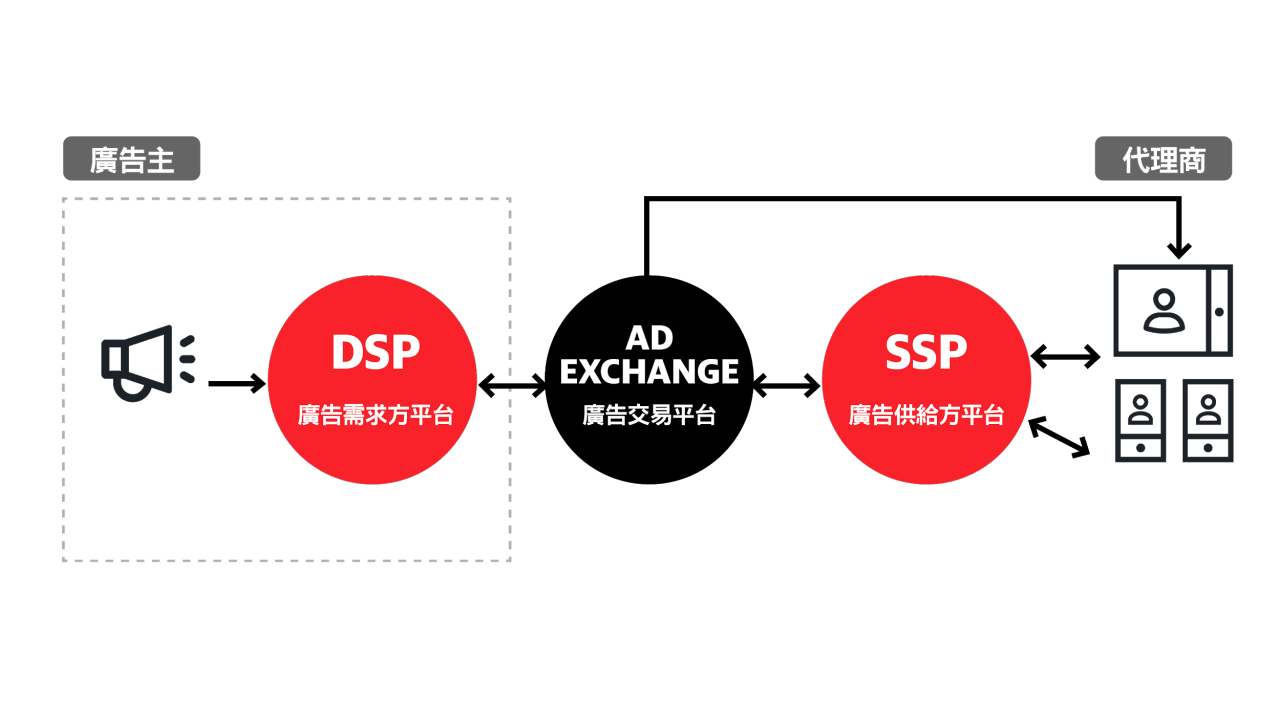
Image source: Internet
In the complex ecosystem of Web2 ad placement, although the synergistic effect of the various modules has improved the efficiency and precision of ad placement, traditional placement still faces some important issues.
Black box operation: In the bidding process, advertisers and traffic owners have very low transparency on the entire process, making it impossible for them to clearly understand the specific bidding situation.
The problem of fake traffic: Although data attribution tools can help analyze the effectiveness of advertising placement and provide some insights, the existence of fake traffic remains a serious challenge.
In fact, there are already some similar projects in the traditional placement field in Web3, such as Spindl and Addressable in the figure below, which are attribution platforms built based on the on-chain behavioral habits of Web3 users; Coinzilla, an integrated traffic network for crypto application ad placements.
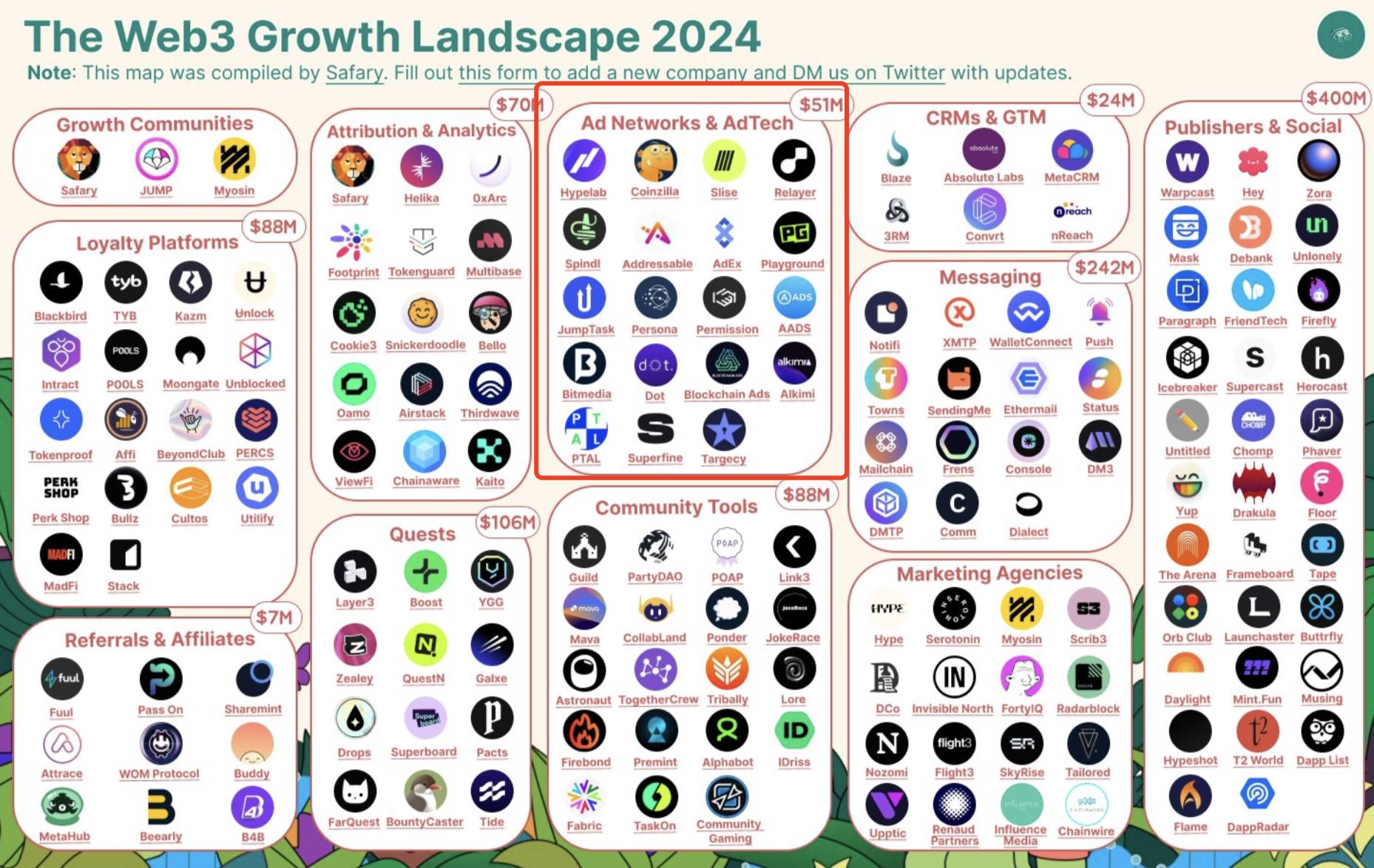
But based on the special attributes of Telegram, what needs to be done is to connect the user tags of Web2 and Web3 in order to better "define Telegram users", so we found OpenAD, the first decentralized platform that realizes the interconnection of Telegram traffic data/tags between Web2 and Web3.
OpenAD, the first decentralized platform that connects TG on-chain and off-chain tags
I first learned about this project from a friend, who told me that the placement effect through OpenAD was more than twice as good as directly buying ads on TG.
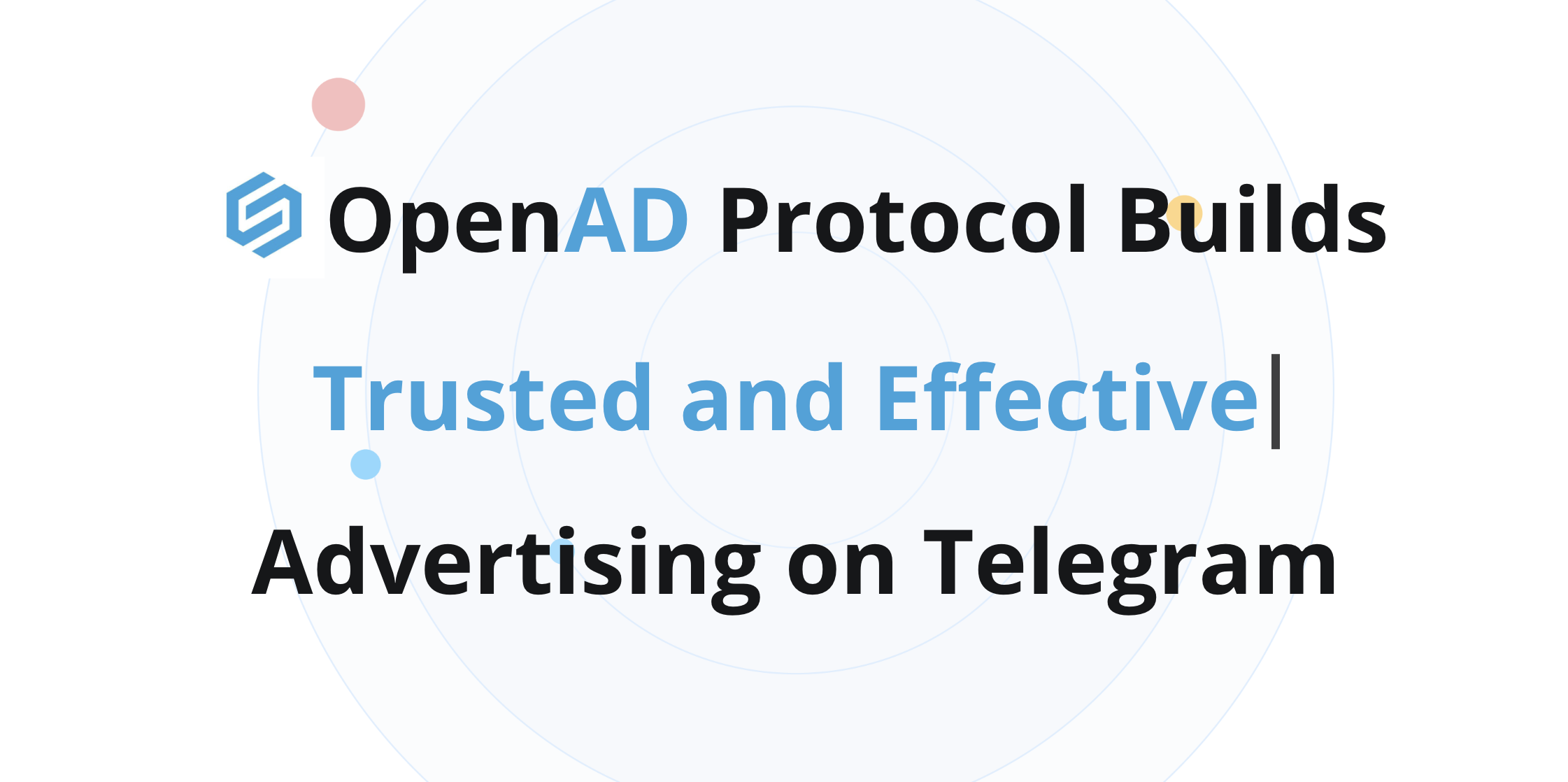
How does OpenAD do it?
In general, OpenAD uses innovative ways to embed various types of ads (banner ads, interactive ads, etc.) into mini apps, allowing your ads to be effectively exposed in different scenarios.
In this process, OpenAD acts like an intermediary, connecting the sellers and buyers of ads.
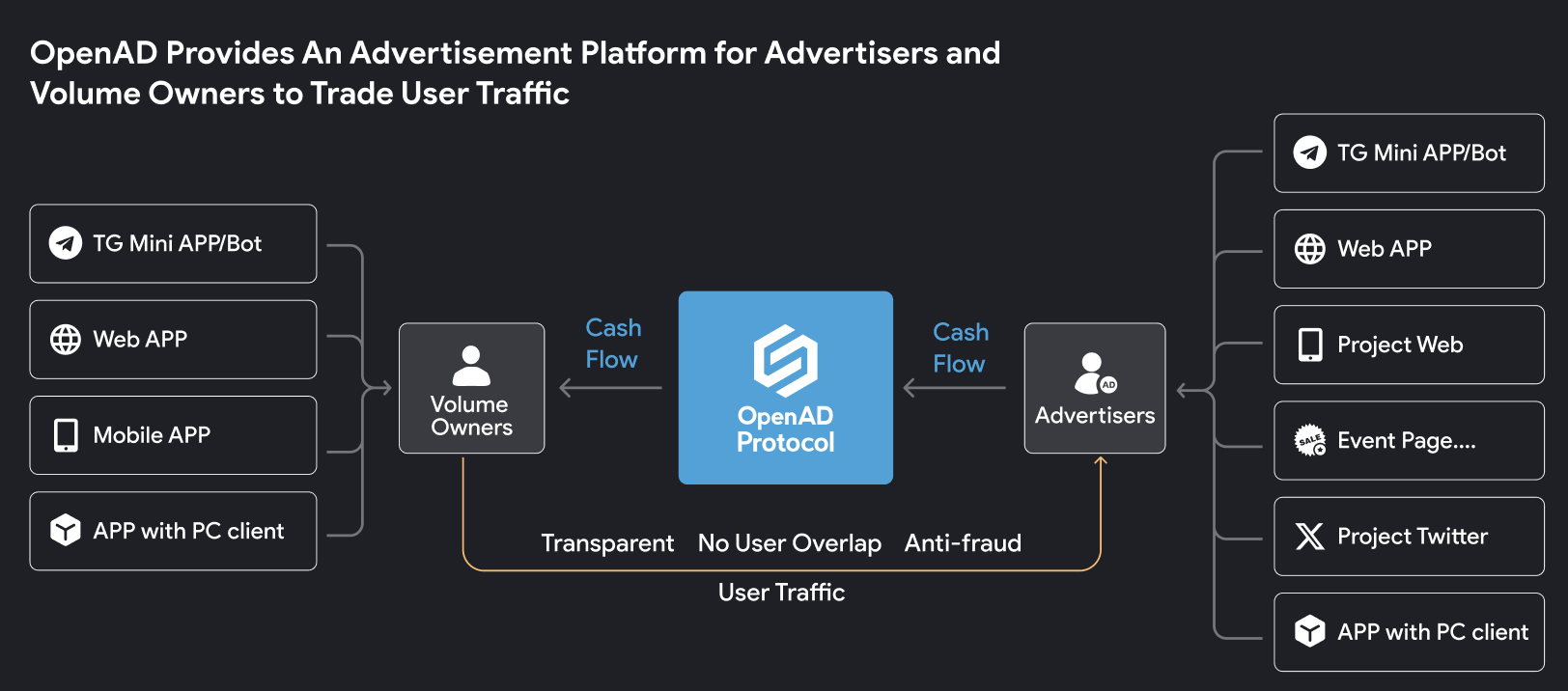
Image source: offline event sharing
It may sound no different from traditional practices, but in fact, OpenAD has the following main features:
1- Tag mini app users
OpenAD conducts fine-grained tagging of mini app users through data analysis and user behavior tracking, such as collecting information on user behavior data (such as browsing history, click-through rate, and usage time) in mini apps, analyzing user interests, preferences, and behavioral patterns, and ultimately building detailed user profiles/tags.
2- Combine with Web3 to make ads more transparent and prevent fraud
OpenAD's ad placement does not set up incentive mechanisms, avoiding shaving users, and ensuring that ad placement and triggering are based on real user activity. The ad system design also increases the difficulty and cost of bot users, automated operations, and Sybil attacks. In addition, by combining with Web3, user activities in OpenAD ads will be recorded and chained through smart contracts at irregular intervals, and ad data can be transparently traced by advertisers and publishers.
3- Form an efficient traffic network with traffic owners, with no user overlap
OpenAD has established cooperative relationships with multiple industry traffic owners (such as multiple high-traffic project parties) to form an efficient traffic network. At the same time, traffic owners can also integrate their traffic resources into the OpenAD network, forming an exchange alliance, turning the original 1v1 BD exchange relationship into a 1vN relationship, achieving better results.
This will bring new changes to both the traffic owners and advertisers, which are important for ad placement.
For example, for advertisers, in the past, buying ads could not distinguish user quality, had low selectivity, and might encounter fake traffic; for traffic owners, they wanted to monetize their traffic but found it difficult to find customers, and if they hard-planted ads in their products, they were worried about affecting the existing user experience.
With the access of platforms like OpenAD, the experience of the entire ecosystem will be completely changed.
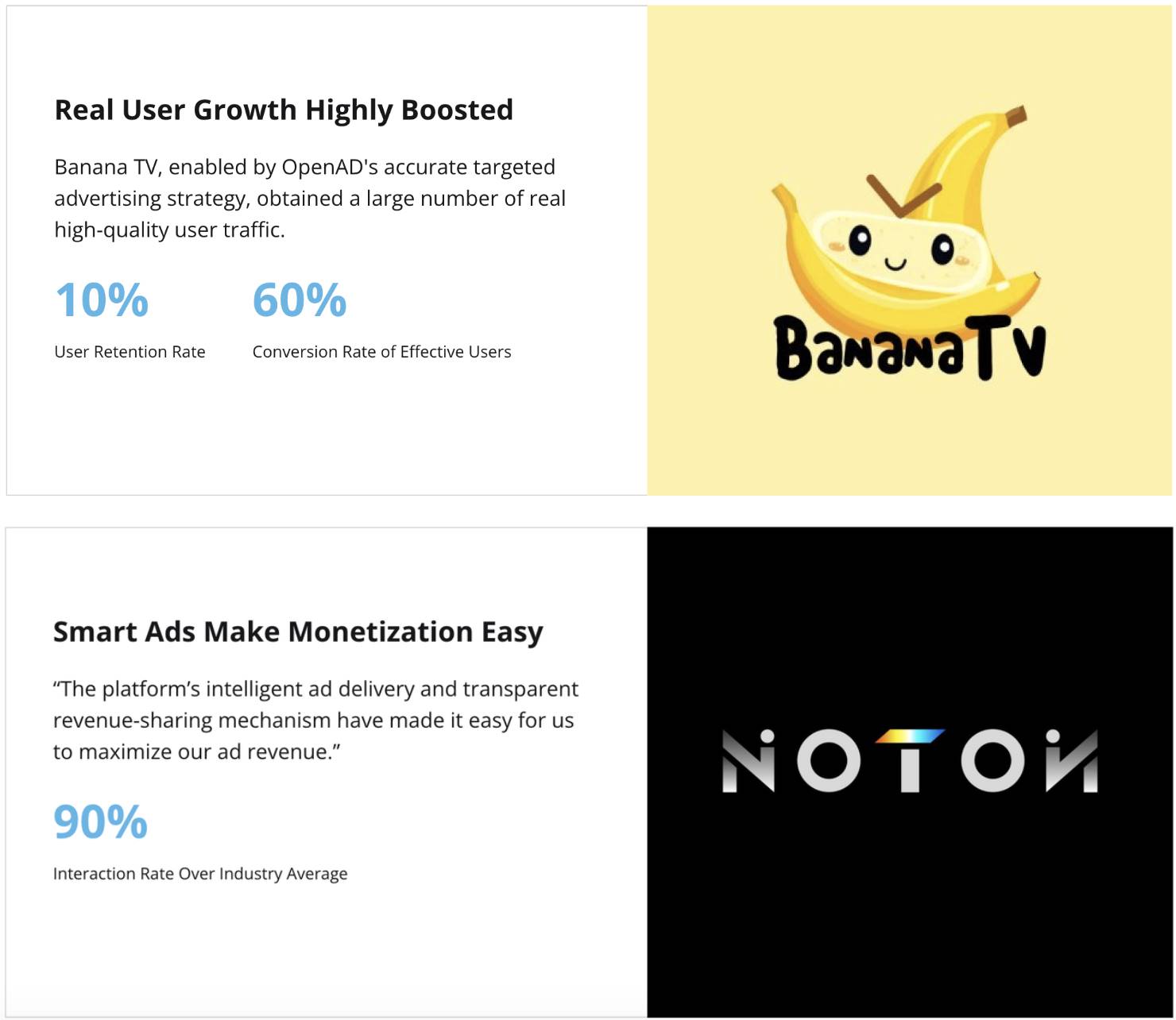
From the official website, we can see that as an advertiser, BananaTV, based on the high-quality user placement of OpenAD, has an overall user interaction rate of up to 60% and a retention rate of 10%; while as a traffic owner, NOTON can obtain higher revenue by selling its traffic slots.
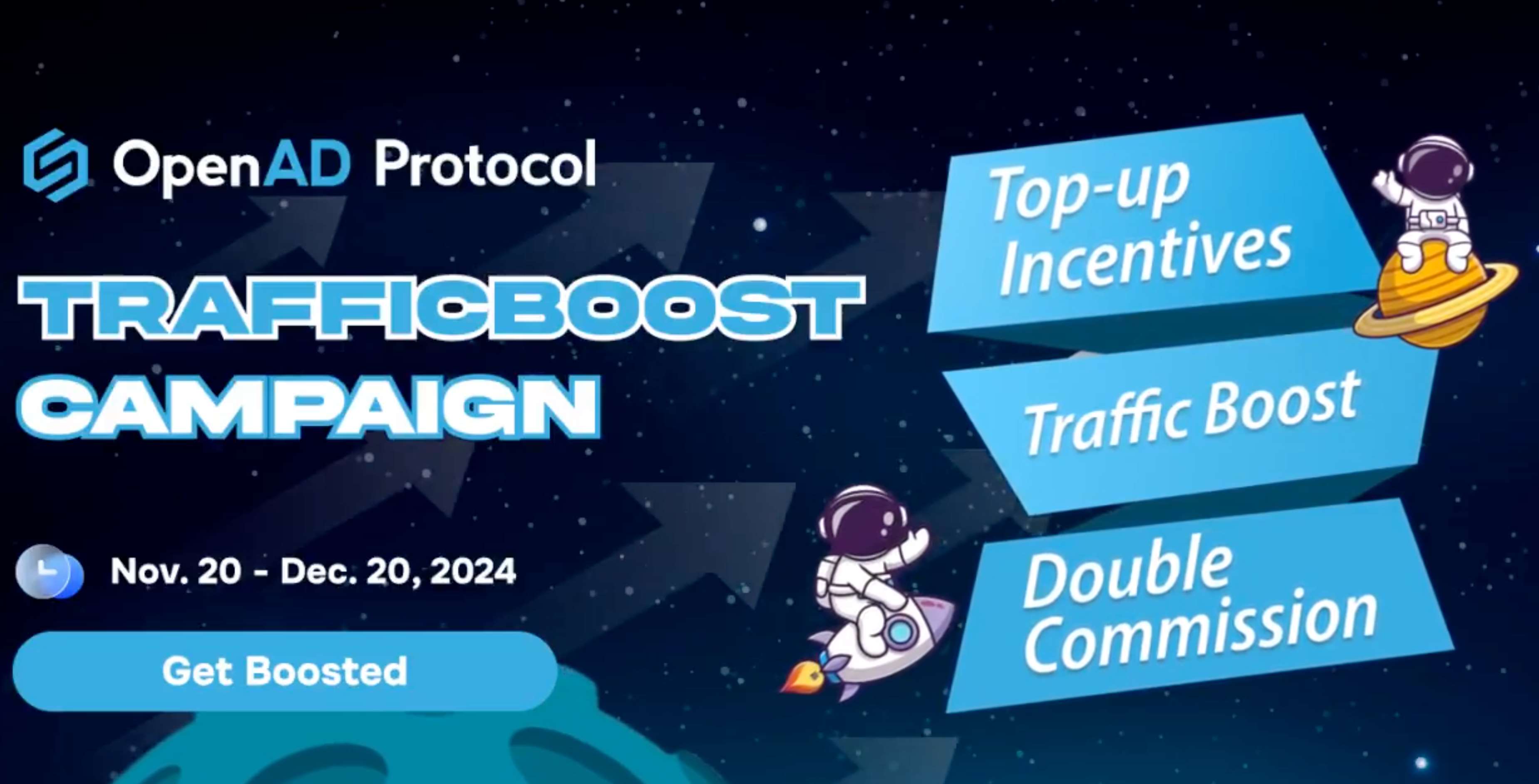
Currently, OpenAD is also launching a one-month traffic incentive activity, the details of which can be found in the official link:
https://x.com/OpenAD_Protocol/status/1859126324436041758
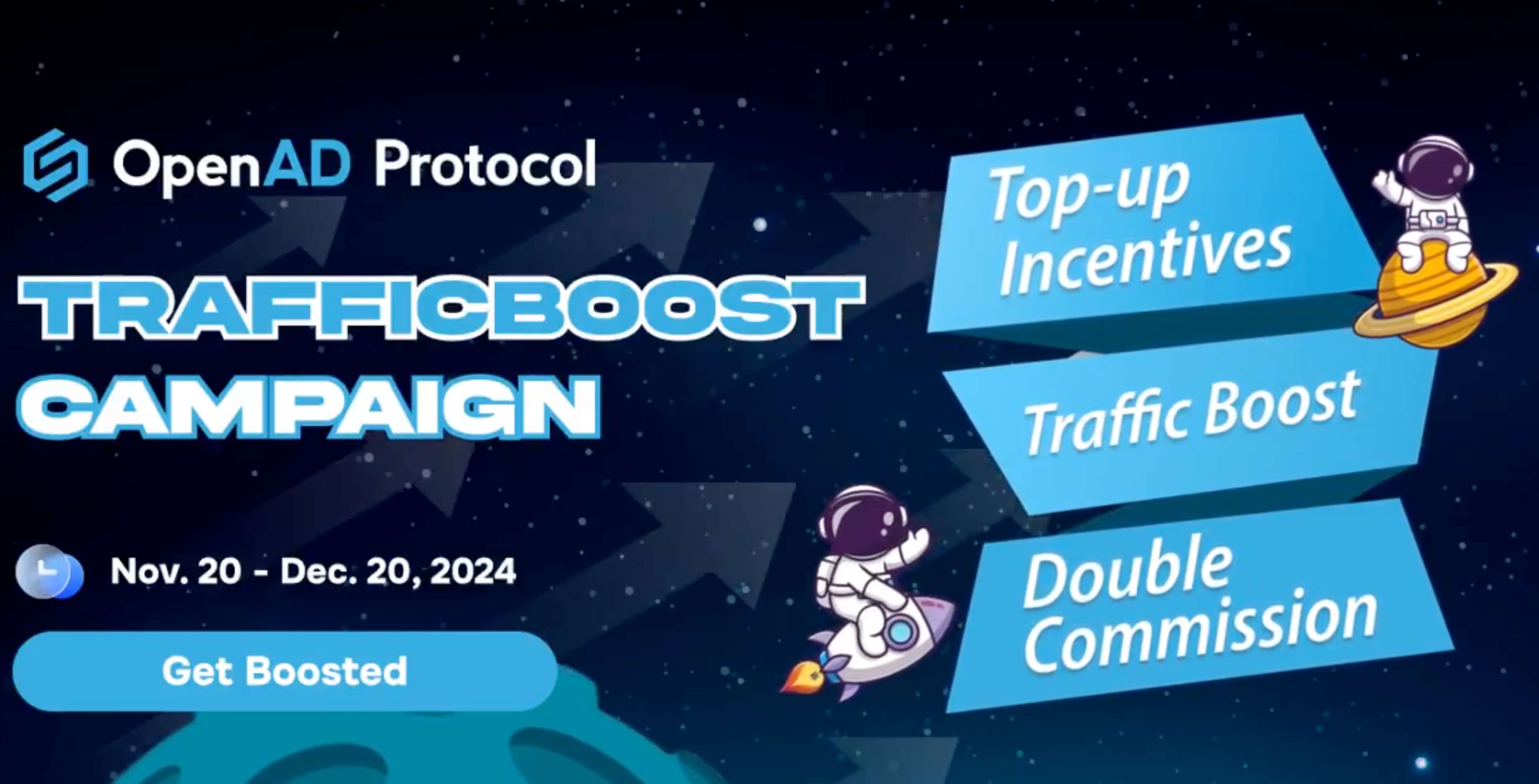
Mutually empowered by Web3, the Telegram advertising ecosystem will become more prosperous
The evolution of the advertising ecosystem is inseparable from the progress of technology. As a rapidly developing social platform, Telegram is also actively exploring the integration with Web3 technology, which will also drive the prosperous development of its advertising ecosystem.
Compared to other platforms, Telegram has unique characteristics, but this does not mean that Telegram will be isolated from other ecosystems.
Just like the Web3 growth-related projects mentioned earlier, OpenAD, as an emerging advertising platform, can not only be limited to Telegram traffic in the future, but also integrate data from other platforms. This cross-platform integration allows advertisers to conduct precise targeting across a wider user base. Through projects like OpenAD, Telegram can also complement other social media and applications, and can more comprehensively understand user interests and behaviors, building a rich advertising ecosystem infrastructure.
Through the integration with Web3, Telegram can provide users with richer application scenarios and interactive experiences. When users use mini apps, they can see ads related to their interests, further enhancing the effectiveness and interactivity of the ads.
The multi-dimensional cooperation between Telegram + Mini App + Web3, the future of the Telegram advertising ecosystem is expected to be more prosperous.








